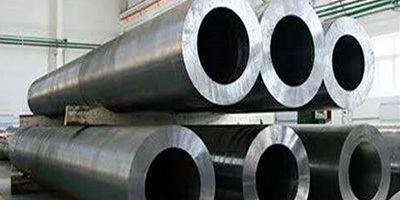
Several Tips to Solve the Corrosion Problem of Flange Forgings
Release time:
20 Jan,2025
The integrity of flange connections is crucial for fluid transport pipeline systems. Whether it is a pipeline system transporting chemical media (such as hydrocarbons) or a water supply line, leaks in flange connections can cause serious environmental and economic impacts, and may even pose significant safety hazards. If flanges are not protected and are exposed to corrosive environments or contaminated industrial atmospheres, the corrosion rate can be rapid.
In addition, due toflangesthe complex geometry of connections, it is easy to encounter gap corrosion between two flange faces and galvanic corrosion between different metals, which can severely damage the integrity of the pipeline system. This article introduces several practical methods to address flange corrosion.
To meet stringent production needs and reduce unexpected downtime caused by leaks, effective monitoring and detection are essential. Typically, technicians are more concerned about leak issues between flange faces, neglecting the protection of fasteners and the external pipeline, which can lead to extremely serious consequences in harsh external environments. Insufficient external protection can accelerate and expand the damage to flanges and fasteners, causing the entire sealing system to deteriorate rapidly, potentially compromising the structural integrity of the system and leading to sealing failure.
Since visual inspection of flange sealing surfaces can only be performed when the entire system is shut down, the inspection procedure should be as simple as possible, thus external corrosion should be eliminated first. If shutdown is not possible, ultrasonic technology can only be used for detection, and in cases where external corrosion cannot be controlled, the process will be more complex and may not yield accurate test results. Therefore, external corrosion protection for flanges and fasteners is crucial for monitoring the entire system and providing effective and feasible quality control and maintenance procedures.
Existing solutions for flange corrosion issues
An ideal solution should balance excellent anti-corrosion protection performance with a simple construction process, and it should be suitable for flanges of various sizes and shapes, allowing for easy operation of bolts during maintenance. Common solutions available in the market include:
1. Maintenance paint solutions
Maintenance paint is a hard film that can be directly bonded to the substrate, generally made of epoxy or polyurethane coatings. Flanges have many edges and corners, and due to the edge thinning effect, conventional paint systems find it difficult to effectively cover the edges. While thickened coatings can solve the edge protection issue, they can also seal fasteners, making them impossible to disassemble during subsequent maintenance. Additionally, operating bolts can damage the coating, requiring re-coating after maintenance.
2. Mechanical solutions
These primarily seal the flange and the gaps between flange faces using protective covers and clamps, typically made of stainless steel or plastic with rubber sealing strips. This protection method has limited flexibility and requires storage of covers or clamps that perfectly match various sizes of flanges.
3. Tape or semi-solid anti-corrosion tape solutions
Roll-packaged tapes (such as mineral grease tape, waxed or elastic polymer wrapping tape) provide protection by wrapping around the substrate surface. Due to the good waterproof properties of semi-solid polymers, this protection method can offer reliable anti-corrosion protection. However, iflarge flangeshave complex shapes, this material is not only time-consuming but also difficult to apply. When bolts need to be disassembled, the material is relatively soft and easy to cut, but it is challenging to reseal and restore the original protection after disassembly, generally requiring reapplication.
4. Thermoplastic solutions
Thermoplastic materials are essentially wax-like fusible polymers that are heated to high temperatures and sprayed onto the substrate surface using specialized hot melt equipment. The advantage of this protection method is that it can be remelted and reused, saving costs. However, this method also requires hot work, specialized equipment, and construction services. Although it can be reused, it is not easy to open and seal during maintenance.
Next page:
Related News
Flange Standards and Selection Methods
20 Jan,2025
What is free forging of forged flanges?
20 Jan,2025



